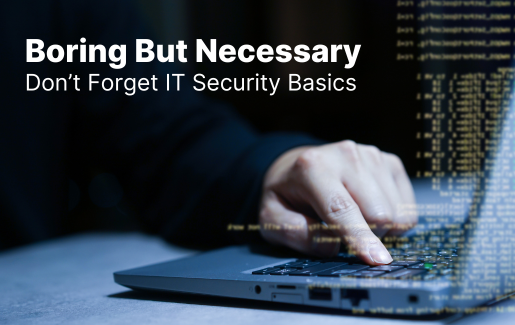 If you’re running a business, you know that an unexpected incident can be damaging—especially if you weren’t prepared for it in the first place. Every business faces risk and your ability to get through those is defined by how well prepared you are. Response time, operational disruption and even the cost of seeing a risk come to life are all things that you can be ready for. But first, you must know what you’re facing. These are the seven types of business risk and how you can prepare for them.
If you’re running a business, you know that an unexpected incident can be damaging—especially if you weren’t prepared for it in the first place. Every business faces risk and your ability to get through those is defined by how well prepared you are. Response time, operational disruption and even the cost of seeing a risk come to life are all things that you can be ready for. But first, you must know what you’re facing. These are the seven types of business risk and how you can prepare for them.
What Are the 7 Types of Business Risk?
Businesses face seven different types of business risk. They fall into the following categories:
- Strategic: Strategic risk is the kind that causes a deviation from your business strategy or model. Examples might involve new technology implementations, shifts in consumer demand or legal changes.
- Compliance: Compliance risk has to do with any failure to meet compliance protocols or government regulations. Examples you might face would include data storage issues, insider threats or data breach.
- Financial: Financial risk is anything that involves the potential loss of revenue. Examples include shifts in cash flow, economic changes or loss of customers.
- Operational: Operational risk is anything that causes disruptions to your operations or your ability to run your business effectively. Some examples include natural disasters, building damage or theft.
- Reputational: Reputational risk is anything that could cause potential harm to your organization’s image or public perception of your brand. Examples of reputational risk include poor product quality, bad customer service or negative media coverage.
- Global: Global risk involves anything that impacts your business because of global conflict or instability. Examples of global risk could be war, supply chain disruption or espionage.
- Competitive: Competitive risks are negative outcomes that occur because of a competitor’s actions which could cause a loss of business. Examples could involve the offering of a better product or service, loss of experienced personnel or shifts in marketing tactics.
Identifying What Types of Risk Your Business is Facing
There is no way to guard against all risk. Rather, you should try to build resilience against those risks by preparing for the worst and hoping for the best. Experts believe that breaches are inevitable, but your ability to respond quickly and protect against critical harm could be what marks the difference between minor disruption and catastrophic failure. Here are some things you’ll need to help you identify what types of risks you’re facing.
Build the Right Team
No single person can anticipate all types of risk. Leadership is likely to have a better pulse on the strategic risks you face while sales have a greater sense of your competitive risk. Just as your organization needs all these team members to function, so too do you need all these stakeholders to weigh in on what risks you might face. Assemble your team and gather thoughts from all representatives.
Document and Categorize Your Risks
Document your risks. Once you have them all documented, you’ll want to map that to its respective risk category. That allows you to identify which resources are needed to mitigate and what response plans you can put in place. Remember to take a pessimistic approach. You want to think about every potential risk, even ones that seem unlikely, such as war or natural disaster.
Consult an Expert
It’s always a good idea to get an expert’s opinion when seeking to understand your risks and planning for mitigation. Experts can help you identify weaknesses you may not have noticed or evaluated. They can also help you develop strategic plans to limit the potential damage from types of business risk you may not be fully prepared to manage, such as global or competitive risk.
Strategies for Mitigating the 7 Types of Business Risk
If you really want to be in a good position, you need to develop a strategy. Here are a few things that you should include.
Attract, Develop and Retain Talent
You can have the best processes in the world, but your ability to mitigate risk ultimately comes down to your people. Getting the right people in the right roles is critical and the first step towards that involves creating a culture that values people and their development.
Make Sure Your Technology is Flexible and Secure
Take extra precautions to secure technology to the best of your ability. Technology that is flexible and secure can help to increase your agility as you respond to risks and incidents.
Improve Risk Culture
Historically, there have been negative perceptions around risk management and incidents in general. In the past, companies have often sought to assign blame or tried to keep incidents out of the public eye. But with the increased prevalence of threats, there’s a push to improve risk culture and create processes to effectively manage and prepare for risk rather than seek blame in the aftermath on an incident. If you can create a positive risk culture, you’re more likely to have prepared staff.
Be Proactive, Not Reactive
Be prepared. Don’t wait for a risk to arise to have a plan in place. Conduct a business impact analysis, have an asset inventory in place and make sure you have documented processes for addressing any incidents that arise.
Put IT Operations Data to Work
Use your data. Take a hard look at what kind of risks you’ve faced over recent years and make sure you have documented strategies to overcome them. Don’t make assumptions about what you’re capable of until you have a look at your data.
Learn how to conduct a Business Impact Analysis (BIA)
Business Risk Impact: Ensuring You Can Recover From Disruptions
 Add CompTIA to your favorite RSS reader
Add CompTIA to your favorite RSS reader

